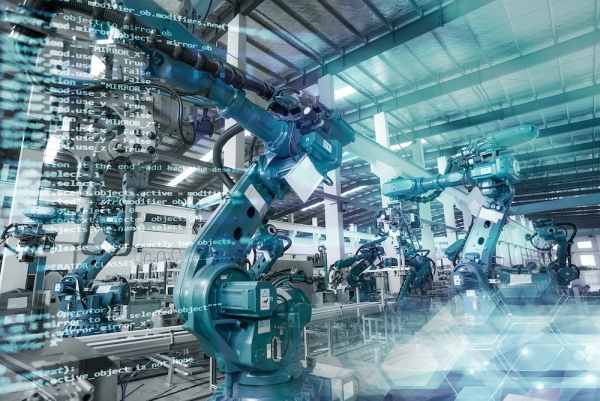
The field of robotics has always fascinated scientists and engineers, driven by the dream of creating autonomous machines that can perform complex tasks in unstructured environments. Over the years, robotics has been deeply intertwined with both traditional academic robotics and artificial intelligence (AI).
However, recent developments have ushered in a new era of robotics, challenging conventional paradigms and pushing the boundaries of what robots can achieve. In this article, we delve into the traditional and new approaches in robotics, exploring how these contrasting methodologies are shaping the future of intelligent machines.
The Traditional Approach
Historically, robotics, computer vision, and AI have operated in somewhat separate domains, with occasional overlap and collaboration. Traditional robotics followed a modular approach, breaking down the problem into distinct components: perception, world modeling, planning, and execution. These interconnected components and robots relied on a centralized, abstract representation of the world to make decisions and execute tasks.
One iconic project epitomizing this traditional approach was Shakey, a mobile robot developed at the Stanford Research Institute (now SRI International) in the late 1960s. Shakey operated in specially prepared rooms and relied heavily on symbolic logic models to navigate and manipulate objects in its environment. While Shakey achieved impressive results within its controlled environment, it struggled to adapt to more complex, dynamic settings like an office environment.
Similarly, at MIT, researchers worked on the Copy-Demo project, which aimed to have a robot perceive and replicate structures made of white wooden blocks against a black background. This project showcased the idea that robots could understand and manipulate the world by relying on abstract symbolic representations, albeit within a constrained environment.
In the realm of AI, the focus was on manipulating world descriptions using symbolic data structures and knowledge bases. The ultimate goal was to create systems that could reason, plan, and explain actions based on these representations. However, this high-level approach rarely integrates seamlessly with robotics or computer vision systems.
In traditional robotics, specific challenges included path planning, kinematics, dynamics, and the need for perfect world models. Researchers grappled with uncertainties and complexities in real-world environments, often resorting to simplifications and idealizations.
The New Approach
Around the mid-1980s, growing dissatisfaction with the performance of traditional robots in dynamic, unstructured environments prompted a paradigm shift. Researchers began to explore novel ways of organizing intelligence in robots, emphasizing real-time responsiveness, adaptability, and robustness. This marked the birth of a new approach to robotics.
Key Realizations in the New Approach:
- Situatedness: In the new approach, robots are “situated” in the real world, dealing with the immediate environment rather than relying on abstract descriptions. They interact with the here and now, responding dynamically to their surroundings.
- Embodiment: These robots have physical bodies and experience the world directly. Their actions are part of a dynamic interaction with the environment, providing immediate feedback on their sensations.
Three Pioneering Architectures:
Agre and Chapman’s Model: At MIT, Agre and Chapman introduced a novel approach that emphasized routine activities in dynamic environments. They developed a system called Pengi, which played video games by interpreting visual information. The system used deictic representations, moving away from traditional AI’s reliance on symbolic naming.
Rosenschein and Kaelbling’s Approach: Researchers at SRI International (later at Teleos Research) designed Flakey, a robot that operated in office environments. Their architecture separated perception and action, using high-level languages to generate provably correct, real-time programs. This approach emphasized the formal specification of relationships between sensors, effectors, and the world.
Brooks’ Subsumption Architecture: Rodney Brooks at MIT introduced the subsumption architecture, a departure from the traditional modular approach. This architecture used networks of message-passing augmented finite state machines (AFSMs) to create robots capable of diverse behaviors. The focus was on integrating perception, action, and control without a central world model.
These new architectures marked a radical departure from the previous paradigms. They embraced the concept of distributed intelligence, where simple computational elements were hardwired together to connect sensors to actuators. This distributed approach eschewed the need for a central world model and emphasized the importance of real-time, dynamic interactions with the environment.
Conclusion
The traditional and new approaches in robotics represent two distinct paradigms in the quest for intelligent machines. While traditional robotics relied on centralized, symbolic representations and modularization, the new approach champions situatedness, embodiment, and distributed intelligence. The latter approach, driven by real-world performance and adaptability, has challenged long-standing assumptions in the field and paved the way for robots capable of thriving in unstructured, dynamic environments.
The ongoing debate between traditional and new approaches continues to shape the future of robotics. As technology advances and our understanding of intelligence deepens, we can expect further innovations that will redefine the capabilities of autonomous machines. Whether through a return to traditional paradigms or the continued exploration of new frontiers, robotics remains an exciting field at the intersection of science, engineering, and human imagination.






















